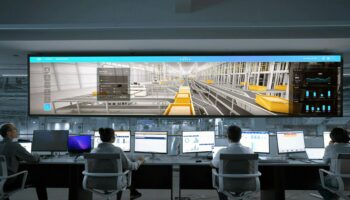In the ever-evolving landscape of technology, the year 2035 looms as a pivotal moment. A mere decade and a half from now, we stand on the cusp of technological marvels that seem almost otherworldly. The World we know today is set to transform, driven by relentless innovation, scientific breakthroughs, and the convergence of various Technological fields. In this article, we’ll journey into the future and explore the technological wonders that await us in 2035.
The Foundation:
Advancements in Artificial Intelligence
At the heart of technological progress in 2035 lies the continued evolution of Artificial Intelligence (AI). Over the past decade, AI has moved beyond being a mere tool and has become a partner in our daily lives. In 2035, AI is omnipresent, seamlessly integrated into the fabric of our existence.
- AI Personal Assistants:
AI-driven personal assistants have evolved to unprecedented levels of sophistication. These intelligent entities anticipate our needs, manage our schedules, and even engage in empathetic conversations, making them indispensable companions.
- Healthcare Revolution:
AI-driven diagnostics have transformed healthcare. Medical professionals collaborate with AI systems that analyze vast datasets to predict and prevent diseases, tailor treatment plans, and even perform surgeries with unrivaled precision.
- Education Transformation:
The classroom of 2035 looks radically different. AI-powered personalized learning systems adapt curriculum to individual student needs, making education more effective and accessible for all.
The Digital Infrastructure:
5G and Beyond
By 2035, the rollout of 5G networks will be complete, ushering in a new era of connectivity. However, the groundwork for the next generation of networks is already underway, promising even Greater speed and reliability.
- 6G Networks:
With data speeds reaching terabits per second, 6G networks are a reality. These networks support holographic communication, augmented reality experiences, and instantaneous global connectivity.
- Edge Computing: Edge computing has become the backbone of the digital World. It reduces latency to near-zero levels, enabling real-time processing for applications like autonomous vehicles and remote surgeries.
Sustainable Technology:
A Greener Future
In 2035, sustainability isn’t just a buzzword; it’s a way of life. The World has rallied to combat climate change, and technology is at the forefront of this global effort.
- Renewable Energy Dominance:
Fossil fuels are no longer the primary energy source. Advanced solar, wind, and tidal power systems, combined with breakthroughs in energy storage, provide clean and abundant energy.
- Smart Cities:
Cities have transformed into Smart, sustainable ecosystems. AI-managed transportation systems reduce congestion and emissions, while waste management is optimized through real-time data analysis.
- Circular Economy: Technology has enabled a circular economy, minimizing waste and maximizing resource efficiency. Everything, from packaging to consumer goods, is designed with sustainability in Mind.
The Digital Economy:
Cryptocurrencies and Blockchain
In 2035, the Financial landscape was disrupted by cryptocurrencies and blockchain technology. Traditional banking systems are adapting to stay relevant in this new era of finance.
- Cryptocurrency Integration:
Digital currencies are ubiquitous, with governments and corporations adopting their cryptocurrencies.
- Decentralized Finance (DeFi): DeFi platforms have revolutionized lending, borrowing, and investing. Smart contracts eliminate the need for intermediaries, democratizing access to financial services.
- Blockchain Beyond Finance:
Blockchain is used in supply chain management, voting systems, and even as a tool to combat counterfeit goods, enhancing transparency and trust in various industries.
The Mobility Revolution:
Autonomous Vehicles and Hyperloop
In 2035, our modes of transportation have undergone a radical transformation. Autonomous vehicles and the emergence of hyperloop technology have redefined the way we move.
- Autonomous Fleets: Self-driving cars are not just a reality; they’re the norm. These vehicles are safer, more efficient, and have virtually eliminated traffic accidents.
- Hyperloop Travel: Hyperloop networks have made rapid, long-distance travel a breeze. These vacuum-sealed pods travel at incredible speeds, connecting cities in minutes, not hours.
Space Exploration: A New Frontier
The space race of the 21st century is in full swing, and by 2035, we have made significant strides in our exploration of the cosmos.
- Colonization of Mars:
Humans have set foot on Mars with the Establishment of Colonies and research outposts. The red planet is a testament to our enduring curiosity and pioneering spirit.
- Mining Asteroids:
Asteroid mining operations have commenced, providing access to rare minerals and resources that were limited to Earth.
The Human-Machine Interface: Brain-Computer Interfaces
The relationship between humans and machines has deepened in 2035. Brain-computer interfaces (BCIs) are the bridge that connects our minds with technology.
- Neural Augmentation:
BCIs enable direct communication between the human brain and external devices. Paralyzed individuals regain mobility, and the possibilities for enhancing cognitive abilities are limitless.
- Virtual Reality Integration:
VR is now indistinguishable from reality, thanks to BCIs. We can step into immersive worlds with nothing more than a thought.
The Ethical Dilemmas
While the technological advancements of 2035 hold immense promise, they also bring forth profound ethical questions.
- AI Ethics:
As AI becomes Advanced, concerns about bias, privacy, and control over these systems have intensified. Striking the right balance between AI autonomy and human oversight is crucial.
- Data Privacy:
With the proliferation of IoT devices and AI, personal data has never been more vulnerable. Robust data privacy regulations are needed to protect individuals from exploitation.
- Environmental Impact:
The rapid pace of technological change has led to environmental concerns, such as e-waste and the energy consumption of data centers. Sustainability must remain a top priority.
The Path Forward
As we gaze into the crystal ball of 2035, the future is both exhilarating and daunting. The pace of technological advancement shows no signs of slowing down, and humanity stands on the precipice of unprecedented possibilities. To navigate this brave new World, we must harness these technologies for the greater good, addressing the ethical challenges while promoting sustainability and inclusivity. The future belongs to those who embrace innovation while staying true to our values, ensuring that the world of 2035 is not just technologically advanced but also a better place for all humanity.
- THE EVOLUTION OF PLASTIC SURGERY - 17 June 2024
- CHOOSE THE RIGHT PERSONAL INJURY LAW FIRM IN CHARLOTTE NORTH CAROLINA - 16 June 2024
- Email UX optimization, offering actionable insights - 16 June 2024






2 Comments